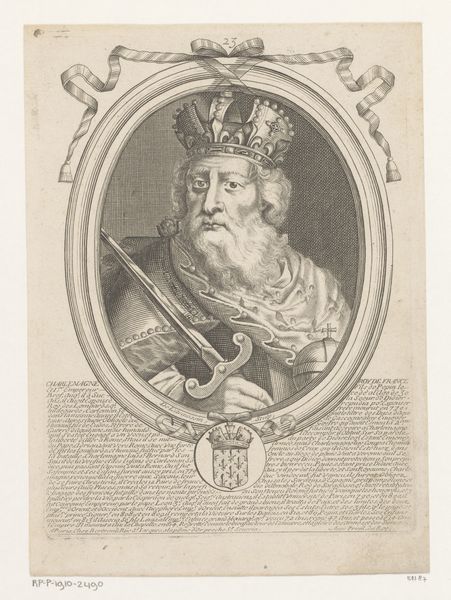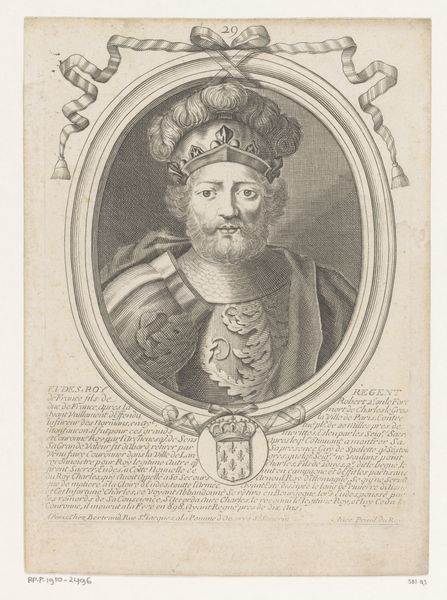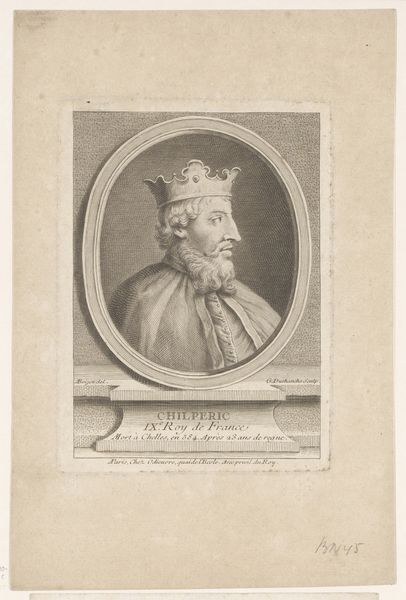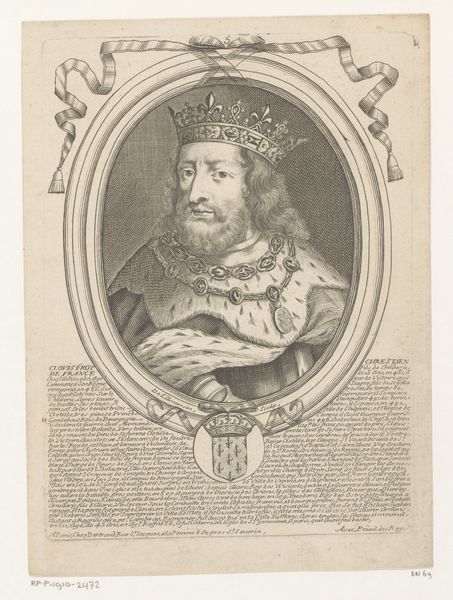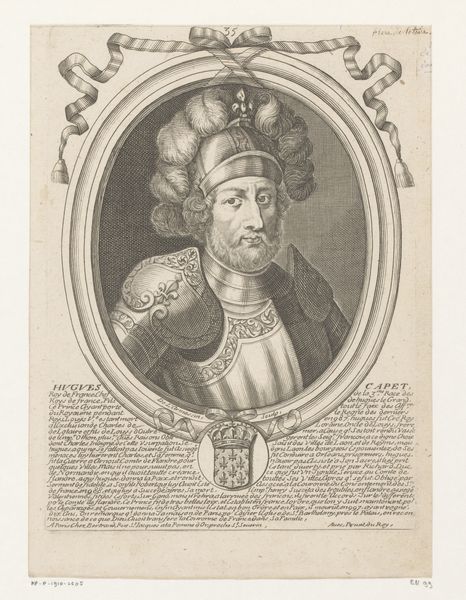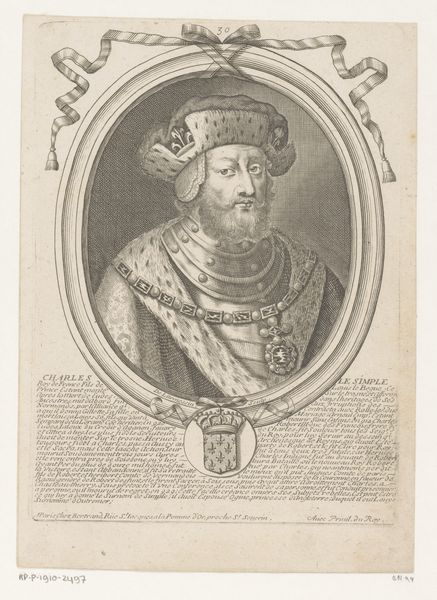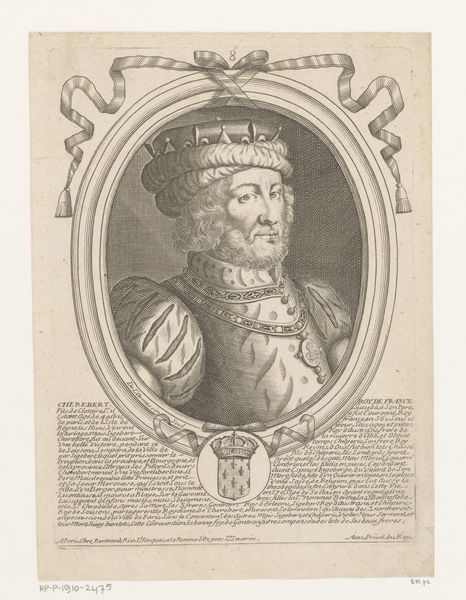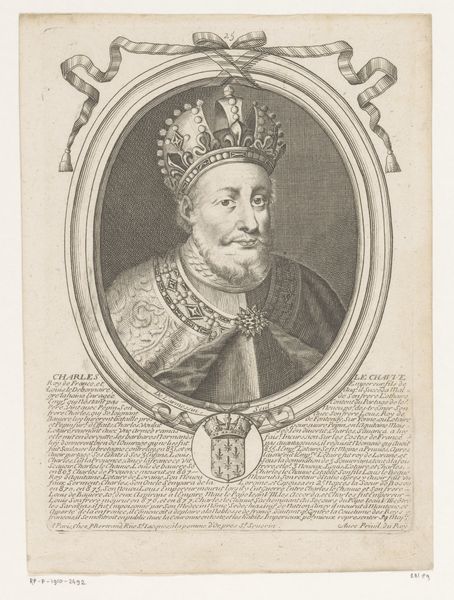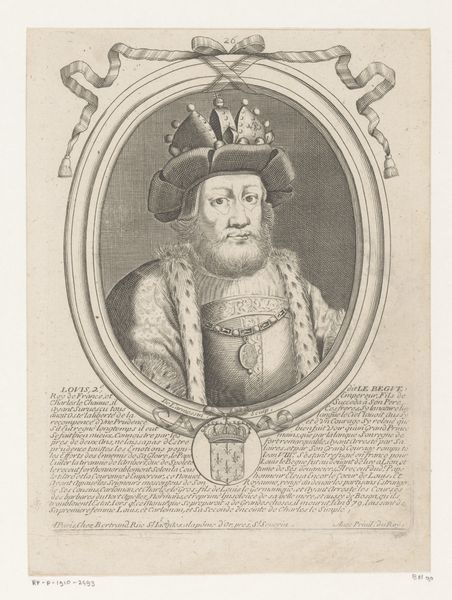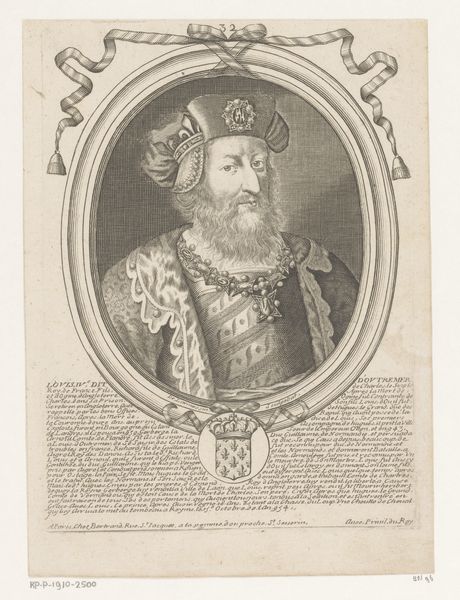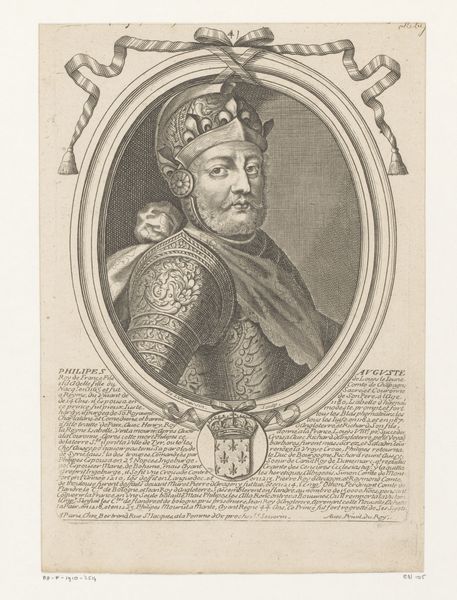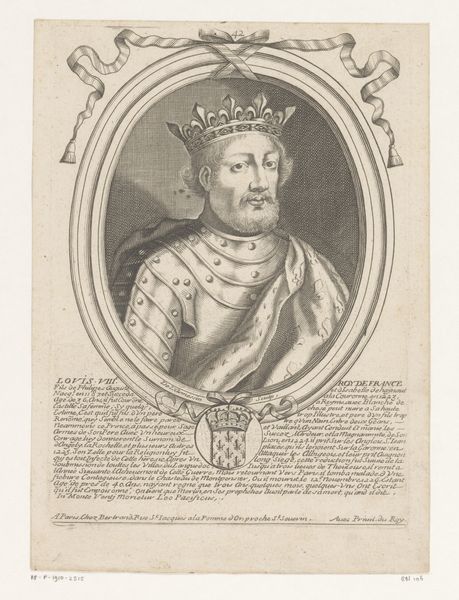
engraving
#
portrait
#
baroque
#
old engraving style
#
caricature
#
history-painting
#
academic-art
#
engraving
Dimensions: height 235 mm, width 173 mm
Copyright: Rijks Museum: Open Domain
Curator: Here at the Rijksmuseum, we’re looking at a rather striking engraving titled "Portret van Childerik I," created sometime between 1647 and 1678 by Nicolas de Larmessin. Editor: My immediate impression is one of powerful assertion – look at that elaborately adorned helmet, like a crown fighting to stay on his head. Yet, there's also a sense of vulnerability conveyed through his expression. Curator: It’s interesting that you say that. From a historical perspective, portraits like these were less about capturing pure likeness and more about constructing an image of authority, even a certain dynasty. Editor: Exactly! The trappings of power, that regal garb and surrounding ornamentation are a carefully curated visual language meant to convey legitimacy, and even, a sense of destiny. It makes me think about how effectively these curated portraits shaped perceptions of the ruling class and reinforces class division in the period. Curator: The engraving medium itself adds another layer. The sharp lines and contrasts emphasize specific details while suppressing others. Think about the power of controlled reproduction – images like these circulated widely and, became ingrained in the public imagination. What socio-political narratives does it attempt to support? Editor: It also speaks to the idea of constructing "history" itself, right? Who is allowed to write, portray, and ultimately control these legacies. The placement of Childeric within that decorative oval emphasizes exclusion and the artifice of royal privilege, in a way. Curator: Indeed. Consider the social function served by such pieces, which often adorned pamphlets, and chronicles, contributing to the perpetuation of dynastic claims, sometimes very overtly political and propagandist. The function extends even further with multiple and later reprints and imitations. Editor: Seeing how power gets portrayed can also shed light on unspoken social and political issues too; who profits from royal depiction, what happens when it becomes subversive? Curator: Precisely. Engaging with works like this reminds us that historical portraiture transcends simple representation, actively building socio-political contexts of their time, and ours. Editor: Absolutely! The way artists chose to depict figures carries immense symbolic weight, telling complex tales of ambition, identity and the ongoing dynamics of power throughout history and even into contemporary politics.
Comments
No comments
Be the first to comment and join the conversation on the ultimate creative platform.
